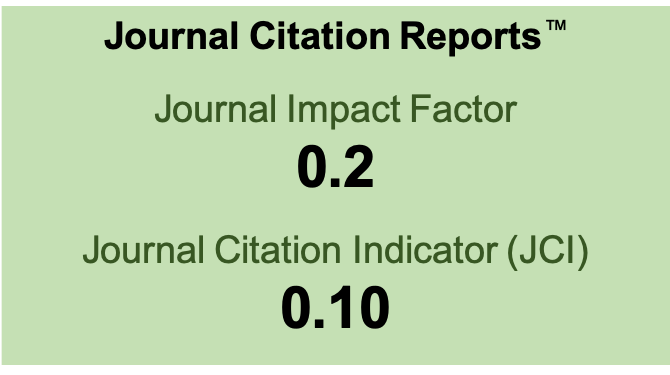Detection of 2, 4-D in groundwater in northeast of the Yucatan Peninsula
DOI:
https://doi.org/10.19136/era.a8n1.2472Keywords:
herbicides, agriculture, HPLCAbstract
Herbicides are used to increase the yield of crops and pastures. The herbicide 2, 4-D has high leaching potential in karstic environments because it is water soluble, which causes that the herbicide has been found in groundwater and submerged caves in the Yucatan Peninsula. We detected the presence of the herbicide in groundwater in agricultural non-agricultural zones in the northeaster of the Yucatán Peninsula by using the UV spectrum obtained from HPLC-DAD as qualitative indicator. This finding supports the notion that application of 2, 4-D before and during the wet season promotes the presence of the herbicide in groundwater.
Downloads
References
Boivin A, Amellal S, Schiavon M, Genuchten MT (2005) 2,4-Dichlorophenoxyacetic acid (2,4-D) sorption and degradation dynamics in three agricultural soils. Environmental Pollution. 138(1): 92-99.
Botero LR, Mougin C, Peñuela G, Barriuso E (2017). Formation of 2, 4-D bound residues in soils: New insights into microbial metabolism. Science of the Total Environment. 584:715-722.
Caldas SS, Demoliner A, Costa FP, D'Oca MG, Primel EG (2010) Pesticide residue determination in groundwater using solid-phase extraction and high-performance liquid chromatography with diode array detector and liquid chromatography-tandem mass spectrometry. Journal of the Brazilian Chemical Society. 21(4):642-650.
Caldas SS, Zanella R, Primel E (2011) Risk Estimate of Water Contamination and Occurrence of Pesticide in the South of Brazil. In: Kortekamp A (ed) Herbicides and Environment. InTech http://www.intechopen.com/books/herbicides-andenvironment/risk-estimate-of-water-contamination-and-occurrence-of-pesticide-in-the-south-of-brazil Fecha de consulta: 25 de mayo de 2018.
Carbo L, Souza V, Dores EF, Ribeiro ML (2008) Determination of pesticides multiresidues in shallow groundwater in a cotton-growing region of Mato Grosso, Brazil. Journal of the Brazilian Chemical Society. 19(6):1111-1117.
Czaplicka M (2004) Sources and transformations of chlorophenols in the natural environment. Science of the Total environment. 322(1-3):21-39.
Escolero O, Marín L, Steinich B, Pacheco J, Maldonado A, Anzaldo J (2005) Geochemistry of the Hidrogeological Reserve of Mérida, Yucatan, Mexico. Geofisica International. 44(3): 301-314.
Gaultier J, Farenhorst A (2007) 2,4-D Mineralization in soil profiles of a cultivated hummocky landscape in Manitoba, Canada. Journal of Environmental Science and Health, Part B. 42(3):255-264.
Góngora-Echeverría VR, Martin-Laurent F, Quintal-Franco C, Lorenzo-Flores A, Giácoman-Vallejos G, Ponce-Caballero C (2019) Dissipation and Adsorption of 2, 4-D, Atrazine, Diazinon, and Glyphosate in an Agricultural Soil from Yucatan State, Mexico. Water, Air, & Soil Pollution. 230(6):131.
INEGI (2009) Prontuario de Información Geográfica Municipal de los Estados Unidos Mexicanos. Instituto Nacional de Estadística y Geografía.
INEGI (2015) Anuario estadístico y geográfico de Quintana Roo. Instituto Nacional de Estadística y Geografía.
INIFAP (2017) Agenda Técnica Agrícola YUCATAN. Progreso, Yucatán.
Kuwatsuka S, Miya N (1989) Change in Population of 2,4-D Degraders in the Process of 2,4-D Degradation in Soils under Upland and Flooded Conditions. Soil Science and Plant Nutrition. 35(4), 535-543.
Lorenzo-Flores A, Giácoman-Vallejos G, Ponce-Caballero MC, Hossein G (2017) Adsorption of organophosphorus pesticides in tropical soils: The case of karst landscape of northwestern Yucatan. Chemosphere. 166:292-299.
McManus SL, Moloney M, Richards KG, Coxon CE, Danaher M (2014). Determination and occurrence of phenoxyacetic acid herbicides and their transformation products in groundwater using ultra high performance liquid chromatography coupled to tandem mass spectrometry. Molecules. 19:20627–20649.
Metcalfe C, Beddows P, Bouchot G, Lavieren V (2010) Contaminants in the coastal aquifer system along the Caribbean coast of the Yucatan Peninsula. Environmental Pollution. 159(4):991-997.
Mikesell MD, Boyd SA (1985) Reductive Dechlorination of the Pesticides 2,4-D, 2,4,5-T, and Pentachlorophenol in Anaerobic Sludges. Journal of Environmental Quality 14:337-340.
National Pesticide Information Center (2008) 2,4-D General Fact Sheet. Health and Environment. http://npic.orst.edu/factsheets/archive/2,4-DTech.html Fecha de consulta 12 de noviembre de 2018
NORMA OFICIAL MEXICANA NOM-127-SSA1-1994 (2000) Secretaria de Salud. Mexico, D.F.
Oturan MA (2000) An ecologically effective water treatment technique using electrochemically generated hydroxyl radicals for in situ destruction of organic pollutants: Application to herbicide 2,4-D. Journal of Applied Electrochemistry. 30:475-482.
Pacheco SJ, Cabrera SA, Marin LE (1997) Nitrate and 2,4-D herbicide in the Karst Aquifer of Yucatan, Mexico. International Conference on Advances in Groundwater Hydrology. American Institute of Hydrology, 47-51.
Pinheiro A, Silva MR, Kraisch R (2010) Presence of pesticides in surface and groundwater in the Itajaí basin, SC. (in Portuguese). REGA 7(2):17–26
Polanco-Rodríguez AG, Navarro-Alberto J, Solorio-Sánchez J, Mena-Rejón G, Marrufo Gómez J, Del Valls Casillas TA (2015) Contamination by organochlorine pesticides in the aquifer of the Ring of Cenotes in Yucatán, México. Water and Environment Journal. 29(1):140-150.
Sanchez J, Alvarez T, Pacheco J, Carrillo L, González RA (2016) Groundwater Quality: Quintana Roo, Mexico, Southern Aquifer. Tecnología y Ciencias del Agua. 7(4):75-96.
Trivedi MK, Branton A, Trivedi D, Nayak G, Singh R, Jana S (2015). Studies on physicochemical properties of biofield treated 2, 4-dichlorophenol. American Journal of Environmental Protection. 4(6):292-299.
Downloads
Published
Issue
Section
License
Copyright (c) 2021 Ecosistemas y Recursos Agropecuarios

This work is licensed under a Creative Commons Attribution-NonCommercial-ShareAlike 4.0 International License.
Aviso de copyright
Los autores que se envían a esta revista aceptan los siguientes términos:
una. Los autores conservan los derechos de autor y garantizan a la revista el derecho a ser la primera publicación del trabajo con una licencia de atribución de Creative Commons que permite a otros compartir el trabajo con un reconocimiento de la autoría del trabajo y la publicación inicial en esta revista.
B. Los autores pueden establecer acuerdos complementarios separados para la distribución no exclusiva de la versión del trabajo publicado en la revista (por ejemplo, en un repositorio institucional o publicarlo en un libro), con un reconocimiento de su publicación inicial en esta revista.
C. Se permite y se anima a los autores a difundir su trabajo electrónicamente (por ejemplo, en repositorios institucionales o en su propio sitio web) antes y durante el proceso de envío, ya que puede conducir a intercambios productivos, así como a una cita más temprana y más extensa del trabajo publicado. (Consulte El efecto del acceso abierto).



